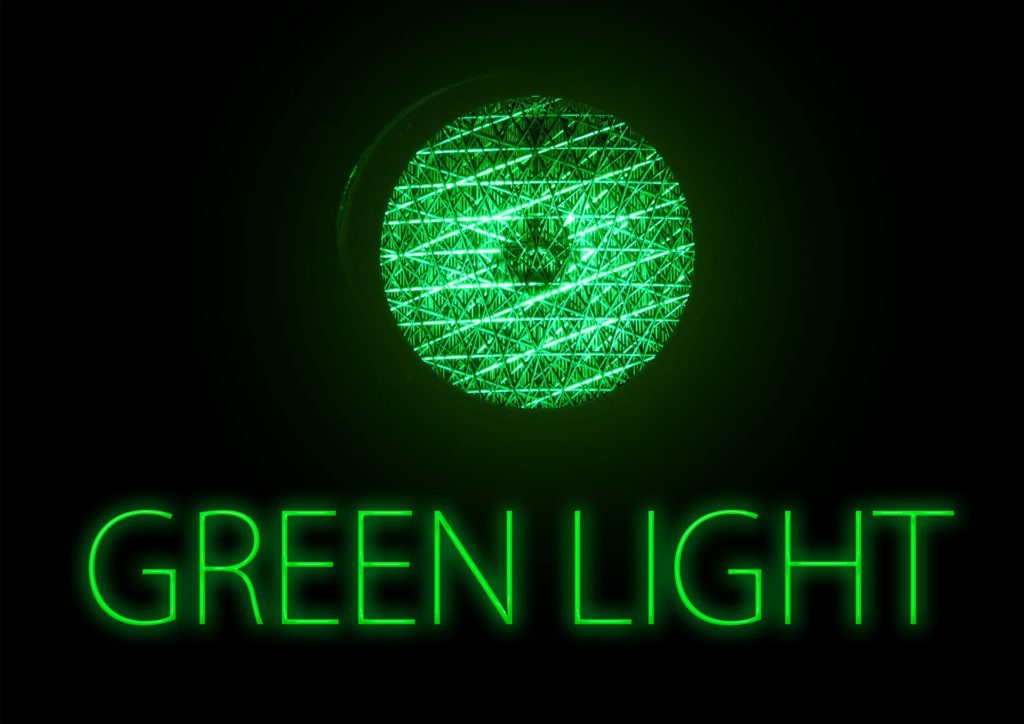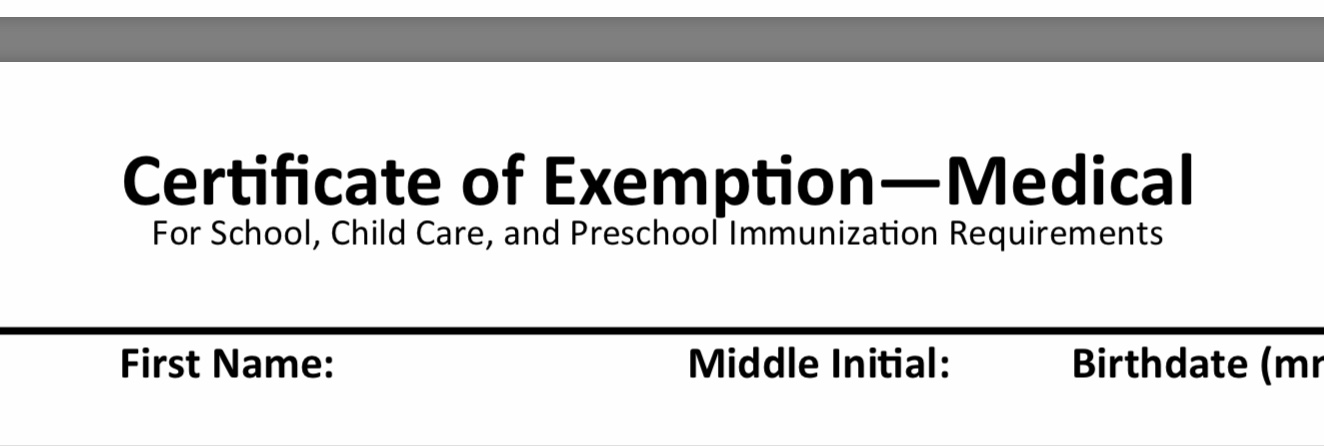In response to the growing anti-vaccination trend, several states now limit personal and/or religious exemptions to vaccinations that are required for school entry. This leaves some parents desperately seeking medical exemptions in order allow their non-vaccinated children to continue to attend schools or daycares.
And some medical providers are willing to comply… for a fee of course. Headlines like the ones below are becoming increasingly common and, unfortunately, leave a dark mark on the name of physicians as those who will do anything for a buck.
Forbes (6/21/2019) – ‘Dr. Bob’ Sears Accused of Issuing
Invalid Vaccine Medical Exemptions — Again
The Daily Beast (10/23/2019) – San Diego Doctor Who Doled out 1,000 Vaccine Exemptions Faces Medical Board Charges
Dear people,
The large majority of doctors are NOT sell-outs, willing to put your child’s health in harms way for the almighty dollar. And PS – if your doctor is charging you high fees to write a medical exemption, be skeptical. If a legitimate reason exists for a medical exemption, then the discussion of this exemption should be covered by your insurance and the most you should incur would be your copay.
But, in reading these stories, it does make a person wonder…. Just what are valid medical reasons to exempt a person from vaccination? Let’s explore this, shall we?
But first, a tangent…
Before we get into the medical reasons not to vaccinate, let me just say one thing (well, I can’t promise that it will be just one thing). In those states that still allow religious exemptions the sudden boom in membership of the Christian Science faith (one which argues that sickness is an illusion and can be corrected by prayer alone) is impressive. They must really be doing some meaningful outreach to grow their ranks so quickly (she says with snark and a questioning eyebrow raise). If you have been coming to the doctor for years for medical care and suddenly can’t get vaccines because your “faith” doesn’t allow medical interventions, like vaccination, it leaves us a bit perplexed. Why the sudden change of heart?
Oh, wait.
There are really only two religions that have historically disallowed vaccination as part of their religious teachings – Christian Science (though this may be changing) and the Dutch Reform Church. Nope, the Catholic Church is not one of those faiths. In fact, the Archdiocese of Seattle has recently eliminated the use of Catholicism, or any other personal or religious/philosophical argument against vaccination, as a reason not to vaccinate kids who attend Catholic schools!
Okay. Back to valid reasons for medical exemption from vaccination. These can generally be divided into two groups – contraindications and precautions.
A Look at Contraindications
If there is a contraindication to a vaccine, it means that the vaccine is absolutely recommended against! These can be permanent or temporary.
An example of a permanent contraindication would be a prior severe/life-threatening reaction (anaphylaxis, for instance) to a vaccine or to any of its components. A person with anaphylactic reaction to the tetanus shot, for example, should not receive any tetanus-containing vaccines in the future. And people with life-threatening yeast allergies would be contraindicated from getting an HPV or Hep B vaccine. This is because yeast is used in the production of these vaccines and small amounts of yeast protein remain in the vaccine end product.
A temporary contraindication, one that should be revisited as the patient’s health status changes, would be the contraindication to give a live-attenuated virus vaccine to someone who is immune suppressed. If the cause of immune suppression is temporary, for example chemotherapy treatment for cancer, then the contraindication against vaccination would also be temporary.
Contraindications can also change as further research is done into the chance of serious reactions. Such was the case with the prior contraindication to getting the flu shot if you had an egg allergy. Further research showed an exceedingly low risk to those allergic to eggs. As a result, in 2016 the Advisory Committee on Immunization Practices (ACIP) changed the guidelines. We now encourage influenza vaccination for those with egg allergies (though, if severe, immunization needs to be carried out in a place and by professionals that can respond to a severe allergic reaction).
Let’s review the list of contraindications. You’ll note, it’s a relatively short list!

Image by Pixabay
Contraindications:
1. Do not administer a vaccine to someone who has had a severe allergic reaction to that vaccine or to a component of the vaccine.
2. Do not administer a DTaP vaccine to anyone who developed encephalopathy (coma, decreased level of consciousness, or prolonged seizures), not attributable to another identifiable cause, within 7 days of a previous dose of DTP or DTaP (pertussis-containing vaccines).
3. Do not give a live-attenuated vaccine to anyone who is immune suppressed. This includes pregnant women and persons on 20 mg or 2mg/kg body weight of prednisone or equivalent steroid daily for >/= 2 weeks. Live-attenuated vaccines should be deferred until at least one month following discontinuation of high-dose steroids.
4. Do not give HPV or Hepatitis B vaccination to persons with a severe allergic reaction/hypersensitivity to yeast.
5. Do not administer rotavirus vaccine to patients with Severe Combined Immunodeficiency (SCID) or to those who have a history of intussusception.
6. Multiple contraindications exist for use of the live-attenuated influenza vaccine (LAIV – or flu nasal spray). Providers should be familiar with these contraindications and can find them listed here. Lucky for us, a nice alternative exists in the injectable influenza vaccine!
A Look at Precautions
The CDC defines a precaution as “a condition in a recipient that might increase the risk for a serious adverse reaction, might cause diagnostic confusion, or might compromise the ability of the vaccine to produce immunity.” A vaccination should typically be deferred when a precaution exists. However, vaccination may still be indicated if the benefit of vaccine protection outweighs the risk of adverse reaction.
An example of a condition that could increase the risk for adverse reaction to a vaccine might include a personal or family history of seizures. A precaution exists for these children when it comes to getting the MMRV (measles, mumps, rubella with varicella) combination vaccine, as research shows an increased risk for febrile seizures in children 12-23 months receiving this immunization. However, there is no precaution for receipt of the MMR and varicella vaccines given separately (even on the same day). And don’t forget, if live-attenuated virus vaccines are not given on the same day, they need to be spaced at least 28 days apart!
A condition that might increase diagnostic confusion would be the presence of a moderate to severe acute illness. Minor acute illnesses (the common cold, for example) are not a precaution to getting vaccinated. However, if one was vaccinated during a moderate to severe illness, it would then be difficult to know if a sudden downturn in health was the result of worsening illness or was an adverse effect of vaccination. Voila! Diagnostic confusion. We should wait to vaccinate these folks until the illness has improved.
A condition compromising the ability of a vaccine to produce immunity might occur when a person has just received treatment with Immune Globulin (IG). IG is a concentrated solution of antibodies prepared from human plasma. It is used to help prevent illness following acute exposures to infectious disease (for example, in an infant under 6 months who is exposed to measles but cannot get the MMR vaccine). It is also used to treat conditions such as Immune Thrombocytopenic Purpura and Kawasaki’s Disease.
However, any IG can interfere with the ability of the person to mount an adequate response to vaccination with live-attenuated virus vaccines. Therefore, use of IG would be a precaution to MMR or varicella vaccination for a certain period of time following IG treatment (see here for a list of uses of IG and the recommended intervals before MMR or varicella vaccines can be given).
Now, let’s look at the list of precautions. It’s a bit longer.

Image by Pixabay
Precautions:
1. Consider avoiding tetanus toxoid-containing vaccine in anyone who developed Guillain-Barre Syndrome (GBS) < 6 weeks after receiving a prior tetanus toxoid-containing immunization.
2. Consider avoiding influenza vaccine in anyone who developed GBS < 6 weeks following flu immunization.
3. Caution should be used in administering the MMRV combination vaccine to a child who has a personal or family history of seizure disorder.
4. Consider avoiding repeat vaccination earlier than 10 year intervals in persons who have developed an Arthus-like** hypersensitivity reaction following a diphtheria toxoid or tetanus toxoid-containing vaccine.
5. Avoid pertussis-containing vaccines in anyone with progressive neurologic disorder until their neurologic status has been stabilized and clarified. This includes infantile spasms, progressive encephalopathy, and/or uncontrolled epilepsy.
6. Avoid giving any vaccine to a person suffering a moderate to severe illness, with or without fever.
7. Delay vaccination for MMR and varicella in persons having received IG treatment within the specified timeframe.
8. There are multiple precautions for use of the live-attenuated influenza vaccine (LAIV). Make sure you are familiar with these precautions when using this vaccine (see here for a complete list of precautions).
9. Immunization against MMR and varicella in persons with HIV depends on lymphocyte counts and evidence of severe immune compromise (see here for guidelines).
10. Caution should be used in giving live-attenuated vaccines to people with a family history of congenital or hereditary immunodeficiency in a parent or sibling (first-degree relative) unless immune competence in the vaccine recipient has been clinically or laboratory confirmed.
11. Measles-containing vaccines can affect tuberculin reactivity. MMR vaccine can be administered on the same day as a TB skin or IGRA test. However, if not administered same day, TB testing should be deferred until at least 4 weeks after immunization if possible. If not possible, the provider should realize that reactivity may be diminished.
12. Antibacterial medications may interfere with the oral typhoid vaccine. Use of the two should be separated in time. For example, oral typhoid vaccine should be completed before doxycycline for malaria prophylaxis is begun. Alternatively, the typhoid injectable vaccine could be used instead.
13. Antiviral medications may interfere with varicella-containing vaccine and LAIV. Antivirals should be discontinued at least 24 hours before vaccination and for 14 days after vaccination with live-attenuated zoster vaccine to allow fullest immune response. Antivirals have no ill effects on reactivity to the killed virus (recombinant zoster vaccine). LAIV should not be given for at least 48 hours after completion of influenza antiviral therapy.
14. Hep B vaccination should be deferred to chronological age of one month or to time of hospital discharge in infants weighing <2000 grams born to mothers known to be HepB surface antigen negative. For infants born to mothers known to be HBsAg-positive, Hep B IG and Hep B vaccine should be administered within the first 12 hours of life, regardless of weight.
15. Aspirin-containing products taken at the same time as varicella-containing vaccination can theoretically increase the risk of Reye Syndrome. The likelihood of developing this condition is greater during an actual chicken pox infection. But to be safe, manufacturers of the vaccine recommend avoiding aspirin for 6 weeks following varicella vaccination.
Note: If you prefer your information in chart form, here is an excellent chart by the Immunization Action Coalition listing vaccines with their contraindications and precautions.
And What is NOT a Contraindication or Precaution?

Image by Pixabay
Well, a whole heck of a lot of other things. There is not room enough to list them all but I will direct you to Table 4-2 here, where you will find a lovely list of all the things that DON’T qualify as reasons not to vaccinate.
Hopefully this helps clarify for patients and providers alike. We acknowledge that vaccines are not without risk. But if we follow the rules, avoiding administration during periods of contraindication or precaution, we can minimize harm and maximize the benefit of these life-saving interventions!
** An Arthus-like reaction is a type III hypersensitivity reaction in which antibody-antigen complexes deposit in certain tissues. This results in complement activation which causes pain, swelling, redness, and rarely necrosis at the injection site. It occurs generally within a few hours of injection and peaks within 36 hours. It is self limited and can be treated with cold compresses, NSAID medications, and elevation of the limb. It is felt to occur because of too frequent injection with tetanus toxoid-containing vaccine. Note: this is more than your average swelling after injection – think swelling/pain/redness of the majority of the upper arm.


What about multiple immunizations with of variants Aluminum and Mercury. Does 15% of those metals end up in the Child’s brain? Is there a list of single dose immunizations that have been independently tested to be free of Neurotoxins like Aluminum and Thimerosal?
Hi David,
I’m not sure where you are getting this number of 15%? Since 2001, there has been NO Thimerosal (Ethyl mercury preservative) in any US licensed vaccine except for multi-dose flu. Aluminum is an adjuvant used to boost immune response. There are no adjuvants in live-attenuated vaccines (for example, MMR and Varicella) as they stimulate the immune response adequately on their own. Killed virus vaccines will use adjuvants and sometimes this is aluminum. But the amount of aluminum in vaccines is a drop in the bucket compared to what we are exposed to in day-to-day living on planet Earth (it is present in the Earth’s crust and leeches into our food and water supply so to escape aluminum you would have to leave the planet). See here for a discussion of how much aluminum babies are exposed to even just in feeding – https://gretchenlasallemd.com/blowing-the-whistle-on-anti-vax-false-claims-part-1/
How often to you inject aluminum directly into your vein? Other than when receiving a vaccine?
Um, vaccines don’t inject aluminum directly into your vein. And please see my other post about “toxins” in vaccines – long story short, you’re already getting exposed to way more aluminum in your existence on this planet than you are in any vaccine.
https://gretchenlasallemd.com/blowing-the-whistle-on-anti-vax-false-claims-part-1/